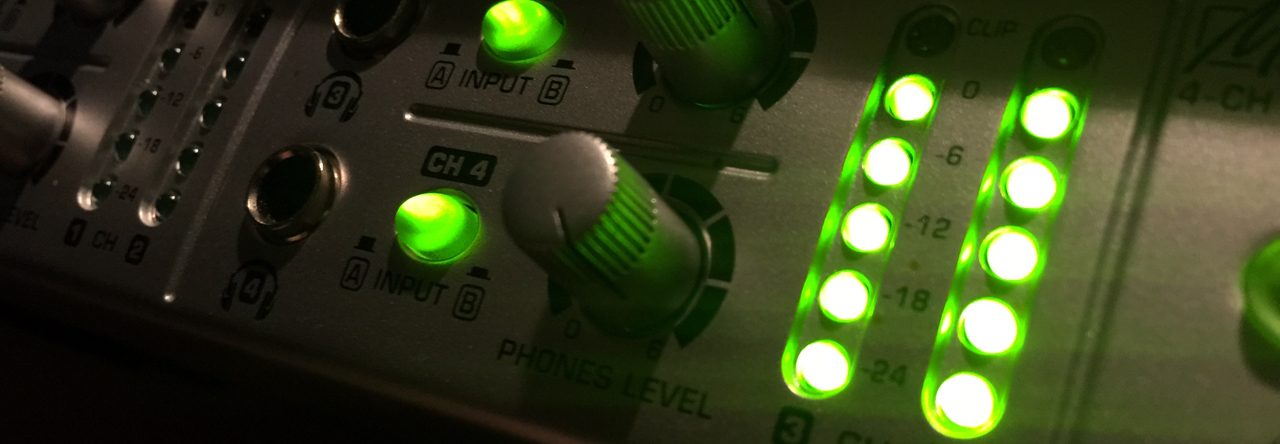
When I initially started researching the equipment I needed for a home studio, I found a multitude of articles that scared the hell out of me–and my bank account. Let’s face it: audio hardware isn’t cheap, especially microphones. But if you pare it down to the basic essentials, those things you absolutely need to get started, it’s pretty manageable.
Basically you need four items:
- A computer (desktop or laptop)
- A microphone
- Audio Interface (to get the audio into your computer)
- Monitors (preferably headphones)
Luckily when I started I already had two of the four requirements: a computer and headphones. I only had to acquire an interface and a mic to complete my setup.

I want to get one thing out of the way first: Don’t listen to mic snobs. Everyone who has any studio or recording experience will have a different opinion on what microphone you need, and what sounds the best. This is truly subjective, and depends primarily on your voice. Don’t let the snobs talk you into a $1,000 mic just because they consider it “the best”. It may not sound good in your set up, or with your voice. Find what you’re happy with and run with it.
I purchased an $85 MXL mic to start with. It’s a budget mic. It’s not the greatest mic, but it worked for me and I booked a lot of jobs with it. Eventually I upgraded to a different mic, but for me, the MXL V67G was the perfect mic to start with.

Another essential is the audio interface. For my money, the Focusrite Scarlett 2i2 was everything I needed: mic in, headphones out. And Focusrite makes some of the best mic preamps in the business. It’s a beautiful little device that converts your mic’s analogue signal into a digital one for your computer. It has one job, and is really good at it.
As for headphones (so you can listen as you record or edit during playback), I have used a pair of Sony MDR7506 for my entire radio career–nearly 20 years–so it was a no brainer to have them in my home studio. I love the way they sound, and fit.
Pretty much any computer will work to start with, but keep in mind that audio recording and editing is really resource intensive. A better machine with more memory and a faster processor will be better in the long run.
I use Adobe Audition for recording and editing, primarily because it’s what I’ve used my entire career. I used Audition back in the Cool Edit days when radio stations were just starting to transition to digital. Audacity is another great tool to use, and it’s free.
To get my studio up and running only cost $288.
I’ve obviously glossed over things like cables, sound proofing, and other equipment like mic stands, but you get the idea. Don’t think of your studio as one huge, expensive project. Break it down into the core pieces you need and work from there. Before you know it, you’ll have an amazing studio that sounds great and you’ll be very proud of. Get the basics, get bookings, and upgrade your studio as you go. Good luck!

Pingback: Take a Video Tour of Studio Blue Media – Terence West.com
Pingback: My Top 10 Voice Over Start Up Lessons – Terence West.com